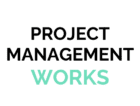If you work in the IT, digital or software industry, you will have come across ‘User Acceptance Testing’ in relation to projects. Whilst you may not currently be required to manage this specific project phase, it is useful to understand the process for your future development as a project management professional. Here’s an overview explaining more about User Acceptance Testing.
What is User Acceptance Testing?
All IT projects; whether developing a piece of software or a website, for example; will have a User Acceptance Testing (UAT) phase. This is a set period of time where the end users – perhaps stakeholders or anonymous user groups of varying abilities and experience – will test the end product and provide feedback, as required, ensuring you are able to iron out any problems prior to going live.
UAT typically focuses on the usability and functionality of an application rather than the technical aspects, and makes use of scripts to represent real world user journeys and ensure a controlled test environment.
For example, a script for the UAT phase of an eCommerce project may track a user through the buying process – from the use of the shopping cart through to payment and subsequent email notifications. Testers from your user groups will then provide feedback or answers to specific questions within the test: data which will then be compiled, reviewed, and responded to accordingly.
Project Management & UAT
The UAT phase of a project is often one of the most crucial – it is this that will determine whether your application is able to go live (or just how many ‘bugs’ need to be addressed before this can happen). As a project manager, it is in your interests to ensure that this phase runs as smoothly as possible, providing a clear plan for all concerned. Often this will include the following stages:
- Providing a UAT plan and designing the tests, in conjunction with your in-house test team
- Selecting user groups to carry out the UAT phase. These may include people within your company, or other anonymous users. Varying abilities and experience with your particular application type can often enhance the test process – ensuring that you have taken account for all user types. It is useful to profile these users and treat their test results accordingly.
- Managing the test itself. Ensure that all user groups are able to carry out their test in a controlled manner.
- Collating the test results – this will require a uniform method of reporting from your testers and a sensible method of bringing this data together to enable review.
- Planning the approach to bug fixes. Make sure you have the resources available to fix any issues that have been found, and a means for confirming the problems that have been fixed.
- You will then be ready for the sign-off process.
Specific approaches to UAT may vary from organisation to organisation and will be dependent on the project management framework you are using. For example, with Agile you will likely be gaining feedback from the client on an ongoing basis throughout the project lifecycle, and UAT will therefore be iterative. Whatever your approach, it is useful to ask yourself why User Acceptance Testing is important, how best to facilitate successful user testing, and how your management style can influence the outcome of the project as a whole.




